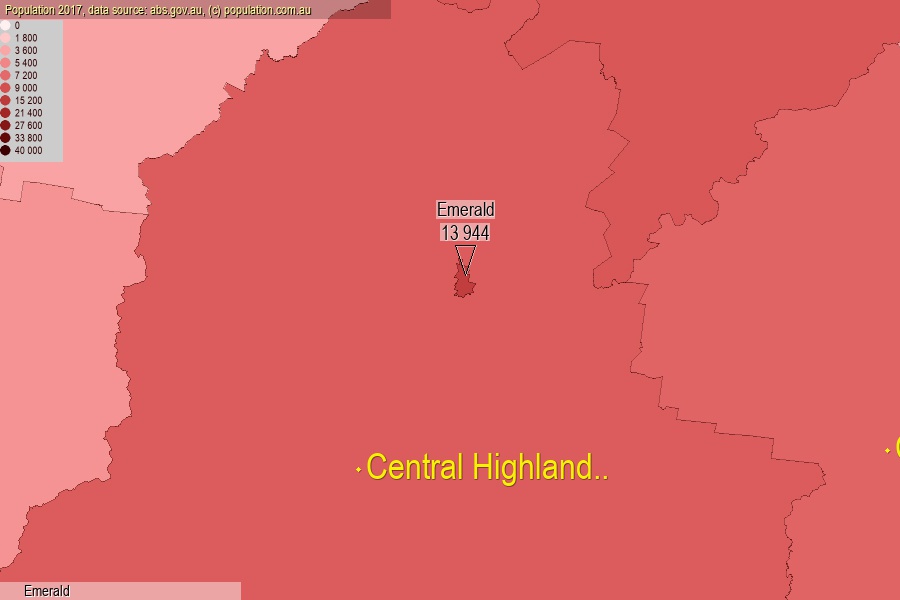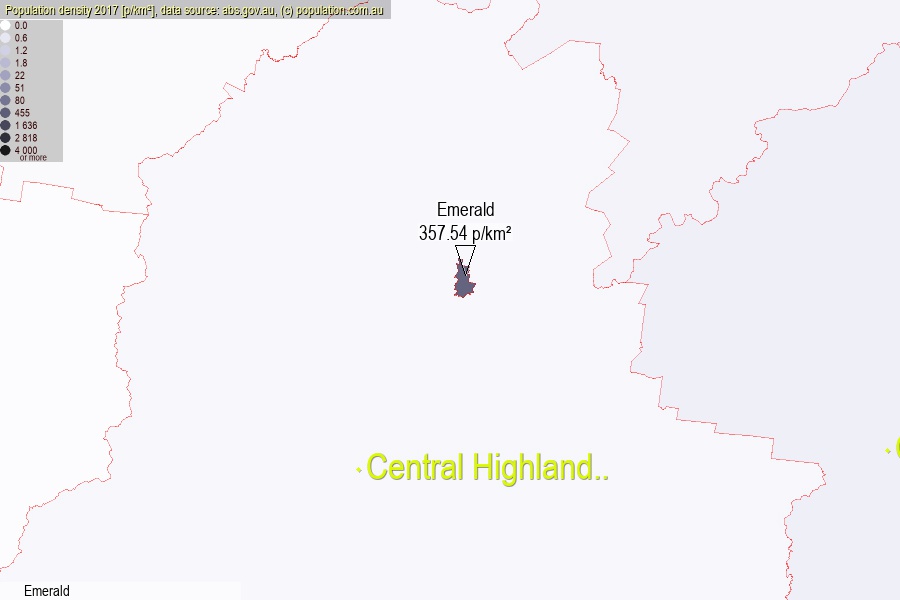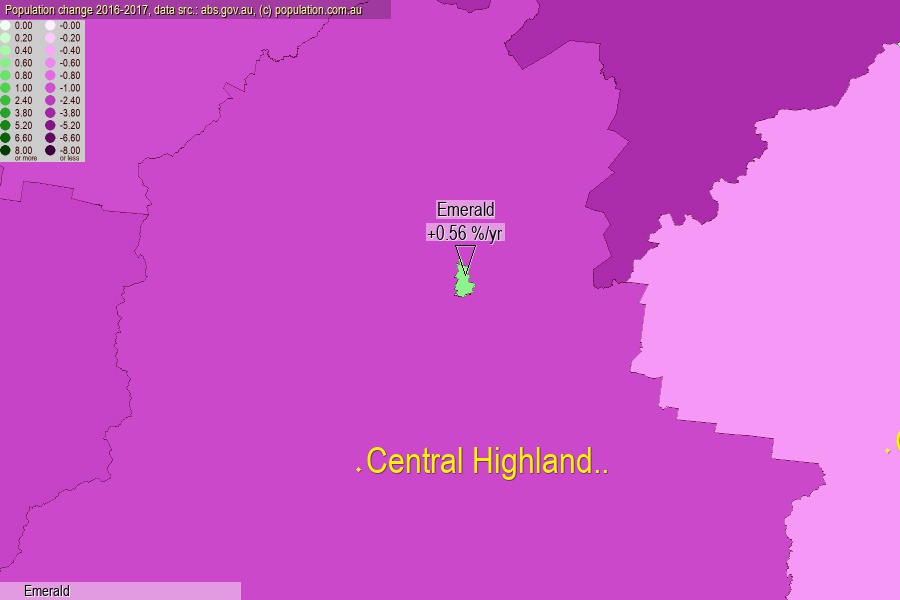 population.com.au
population.com.auLast official estimated population of Emerald (as Statistical Area Level 2) was 13 944 people (on 2017-06-30)[2]. This was 0.06% of total Australian population and 0.279% of QLD population. Area of Emerald is 39.00 km², in this year population density was 357.54 p/km² . If population growth rate would be same as in period 2016-2017 (+0.56%/yr), Emerald population in 2025 would be 14 576. [0]



Click to enlarge. Emerald is located in the center of the images.
Population [people], population density [p./km²] and population change [%/year] [2]
View borders » (new window) [4]
[1991-1992] +10.28 %/Yr.
[1992-1993] +5.72 %/Yr.
[1993-1994] +3.83 %/Yr.
[1994-1995] +5.21 %/Yr.
[1995-1996] +4.83 %/Yr.
[1996-1997] +2.26 %/Yr.
[1997-1998] +2.32 %/Yr.
[1998-1999] -0.04 %/Yr.
[1999-2000] -0.28 %/Yr.
[2000-2001] +1.62 %/Yr.
[2001-2002] +3.68 %/Yr.
[2002-2003] +2.63 %/Yr.
[2003-2004] +3.00 %/Yr.
[2004-2005] +3.07 %/Yr.
[2005-2006] +3.17 %/Yr.
[2006-2007] +3.61 %/Yr.
[2007-2008] +3.57 %/Yr.
[2008-2009] +3.42 %/Yr.
[2009-2010] +2.49 %/Yr.
[2010-2011] +2.48 %/Yr.
[2011-2012] +1.21 %/Yr.
[2012-2013] +0.98 %/Yr.
[2013-2014] +0.29 %/Yr.
[2014-2015] -0.16 %/Yr.
[2015-2016] -0.60 %/Yr.
[2016-2017] +0.56 %/Yr.
[0] Calculated with linear interpolation from officially estimated population
[1] Read more about SA2 and Australian Statistical Geography Standard (ASGS) on abs.gov.au
[2] Population data from Australian Bureau of Statistics (Population and density: 2017; change: 2016-2017)
[3] Digital Boundaries: Australian Statistical Geography Standard (ASGS) 2016.
[4] Border coordinates are simplifyed using Ramer-Douglas-Peucker algorithm.